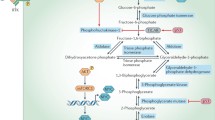Abstract
Purpose: To investigate the serial changes of the hepatic metabolites in a chemical-induced rat model of hepatocellular carcinoma (HCC) in vivo by a clinical 1.5 T MR scanner. Methods: Diethyl nitrosamine (DEN) induced HCC model rats (n=60) and control rats (n=20) were included. From week 7 to week 20 after DEN administration, every other week 10–12 animals (8–9 treated and 2–3 controls) were randomly scanned before being sacrificed. According to the pathologic changes, the whole process of tumorigenesis was divided into early and late periods (week 7–13 and week 14–20, respectively). The serial hepatic changes were tested by both routine MRI and single voxel 1H-MRS and compared with pathological results. Point resolved spectroscopy sequence (PRESS) was used for the location in MRS. The integrations of lipid- and choline-containing metabolites were calculated and analyzed. Results: All of the listed tests were fully finished in 66 rats (48 treated and 18 controls). Of the MRS curves, 65.2% (43/66) could be analyzed (mainly with resistant baseline with peaks appearing at right positions). From those qualified MRS curves, there were up to seven peaks which could be identified. The peaks of methylene lipids and methyl lipids were combined together in most cases and became the most notable component. The relative integrals of the combined lipid peak and that of the choline-containing compounds in different groups and stages were measured. Comparing with that of the controls of the same stage, the lipid of treated rats decreased in the late stage, and the choline-containing compounds increased in the same stage. Statistically significant differences were found (P<0.05) for the integrals of the lipid and the choline-containing metabolites between treated and controls in the late stage. Conclusions: Our initial studies for the integrals of the lipid compounds and the choline-containing metabolites might be useful for a better understanding of the metabolic activity of this DEN-induced rat HCC model.




Similar content being viewed by others
References
Ackerstaff E, Pflug BR, Nelson JB, Bhujwalla ZM (2001) Detection of increased choline compounds with proton nuclear magnetic resonance spectroscopy subsequent to malignant transformation of human prostatic epithelial cells. Cancer Res 61:3599–3603
Allen JR, Prost RW, Griffith OW, Erickson SJ, Erickson BA (2001) In vivo proton (H1) magnetic resonance spectroscopy for cervical carcinoma. Am J Clin Oncol 24:522–529
Cance WG, Stewart AK, Menck HR (2000) The National Cancer Data Base Report on treatment patterns for hepatocellular carcinomas: improved survival of surgically resected patients, 1985–1996. Cancer 88:912–920
Cho SG, Kim MY, Kim HJ et al (2001) Chronic hepatitis: in vivo proton MR spectroscopic evaluation of the liver and correlation with histopathologic findings. Radiology 221:740–746
Dixon RM (1998) NMR studies of phospholipid metabolism in hepatic lymphoma. NMR Biomed 11: 370–379
Foley LM, Towner RA, Painter DM (2001) In vivo image-guided 1 H-magnetic resonance spectroscopy of the serial development of hepatocarcinogenesis in an experimental animal model. Biochim Biophys Acta 1526:230–236
Galli C, Rise P, Marangoni F et al (1997) Manipulation of the fate of long chain polyunsaturated fatty acids in cultured cells. Prostaglandins Leukot Essent Fatty Acids 57:23–26
Ha WS, Kim CK, Song SH, Kang CB (2001) Study on mechanism of multistep hepatotumorigenesis in rat: development of hepatotumorigenesis. J Vet Sci 2:53–58
Hasumi M, Suzuki K, Oya N, Ito K, Kurokawa K, Fukabori Y, Yamanaka H (2002) MR spectroscopy as a reliable diagnostic tool for localization of prostate cancer. Anticancer Res 22:1205–1208
Jacobs MA, Barker PB, Bottomley PA, Bhujwalla Z, Bluemke DA (2004) Proton magnetic resonance spectroscopic imaging of human breast cancer: a preliminary study. J Magn Reson Imaging 19:68–75
Kumar A, Kaushik S, Tripathi RP, Kaur P, Khushu S (2003) Role of in vivo proton MR spectroscopy in the evaluation of adult brain lesions: our preliminary experience. Neurol India 51:474–478
Kuo YT, Li CW, Chen CY et al (2004) In vivo proton magnetic resonance spectroscopy of large focal hepatic lesions and metabolite change of hepatocellular carcinoma before and after transcatheter arterial chemoembolization using 3.0-T MR scanner. J Magn Reson Imaging 19:598–604
Lim AK, Patel N, Gedroyc WM, Blomley MJ, Hamilton G, Taylor-Robinson SD (2002) Hepatocellular adenoma: diagnostic difficulties and novel imaging techniques. Br J Radiol 75:695–699
Lim AK, Patel N, Hamilton G, Hajnal JV, Goldin RD, Taylor-Robinson SD (2003) The relationship of in vivo 31P MR spectroscopy to histology in chronic hepatitis C. Hepatology 37:788–794
Mahon MM, Cox IJ, Dina R, Soutter WP, McIndoe GA, Williams AD, deSouza NM (2004) 1H magnetic resonance spectroscopy of preinvasive and invasive cervical cancer: In vivo-Ex vivo profiles and effect of tumor load. J Magn Reson Imaging 19:356–364
Parkin DM (2001) Global cancer statistics in the year 2000. Lancet Oncol 2:533–543
Podo F (1999) Tumour phospholipid metabolism. NMR Biomed 12:413–439
Rise P, Marangoni F, Galli C (2002) Regulation of PUFA metabolism: pharmacological and toxicological aspects. Prostaglandins Leukot Essent Fatty Acids 67:85–89
Schafer DF, Sorrell MF (2001) Hepatocellular carcinoma 353:1253–1257
Star-Lack JM, Adalsteinsson E, Gold GE, Ikeda DM, Spielman DM (2000) Motion correction and lipid suppression for 1h magnetic resonance spectroscopy. Magn Reson Med 43:325–330
Tarasow E, Siergiejczyk L, Panasiuk A, Kubas B, Dzienis W, Prokopowicz D, Walecki J (2002) MR proton spectroscopy in liver examinations of healthy individuals in vivo. Med Sci Monit 8:MT36–MT40
Taylor-Robinson SD, Sargentoni J, Bell JD et al (1997) In vivo and in vitro hepatic 31P magnetic resonance spectroscopy and electron microscopy of the cirrhotic liver. Liver 17:198–209
Author information
Authors and Affiliations
Corresponding author
Rights and permissions
About this article
Cite this article
Zhao, WD., Guan, S., Zhou, KR. et al. In vivo detection of metabolic changes by 1 H-MRS in the DEN-induced hepatocellular carcinoma in wistar rat. J Cancer Res Clin Oncol 131, 597–602 (2005). https://doi.org/10.1007/s00432-005-0684-x
Received:
Accepted:
Published:
Issue Date:
DOI: https://doi.org/10.1007/s00432-005-0684-x




